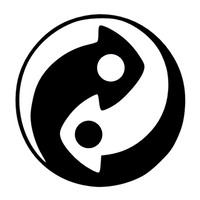Why Upcycled Denim is the Future of Fashion
Denim is a staple, a cultural artifact woven into the very fabric of fashion. From the rebellious icons of the ‘50s to the streetwear pioneers of today, jeans have been through countless iterations—but as the world turns its attention to sustainability, a new wave is taking over: upcycled denim.
At the crossroads of craftsmanship and conscious consumption, upcycled denim is not just a trend; it’s a movement reshaping the industry. While fast fashion churns out millions of jeans every year—most of which end up in landfills—the future of denim is being redefined by brands and designers who are turning old jeans into new icons.
The Problem with Traditional Denim
Denim’s environmental footprint is staggering. A single pair of jeans requires around 1,800 gallons of water to produce, not to mention the harmful dyes, pesticides, and chemicals that go into traditional manufacturing. The fashion industry, particularly denim production, is a major contributor to global pollution and waste. With the growing awareness around climate change and ethical production, it’s no longer enough to create aesthetically pleasing garments—brands must be accountable for their impact.

Upcycled Denim: A New Standard for Style and Sustainability
Enter upcycled denim: a practice that takes existing denim garments—whether vintage, deadstock, or post-consumer waste—and reworks them into something fresh. Unlike simple secondhand shopping, upcycling brings an element of reinvention, giving pieces a second (or third) life through deconstruction, patchwork, and repurposing techniques. The result? One-of-a-kind pieces that don’t just tell a story but carry the weight of responsible fashion.
The Brands Leading the Charge
A new guard of fashion labels is proving that upcycled denim isn’t just a niche aesthetic—it’s the future of premium, conscious fashion. Brands like SiamCircle are redefining what luxury looks like by transforming discarded denim into intricately crafted, one-of-a-kind pieces. Their meticulous process blends artisanal craftsmanship with street-style sensibility, creating garments that stand out in both sustainability and design.
Other players like Ksenia Schnaider, E.L.V. Denim, and BODE have carved out a space for upcycled denim in both high fashion and streetwear, showing that repurposed materials don’t compromise creativity—they enhance it. Meanwhile, bigger brands like Levi’s and Ganni have also dabbled in upcycling, signaling that the industry is beginning to take notice.
The Cultural Shift Toward Conscious Consumption
Beyond just brands, the appeal of upcycled denim is rooted in cultural shifts. The new generation of consumers is more informed, more intentional, and more experimental. They’re drawn to individuality—pieces that have a backstory, a touch of craftsmanship, and an ethos that aligns with their values. Upcycled denim is not just about reducing waste; it’s about owning something unique in an age of mass production.

The Future is Circular
The rise of upcycled denim marks a shift towards circular fashion—a system where waste is minimized, resources are reused, and longevity is prioritized. Instead of discarding old jeans, the industry is moving toward a model where denim is endlessly repurposed, breathing new life into vintage fabrics.
While the mainstream fashion industry still has a long way to go, upcycled denim is proof that sustainability and style can co-exist. The future of fashion isn’t about keeping up—it’s about slowing down, looking back, and reimagining what we already have. And that’s exactly why upcycled denim is here to stay.
